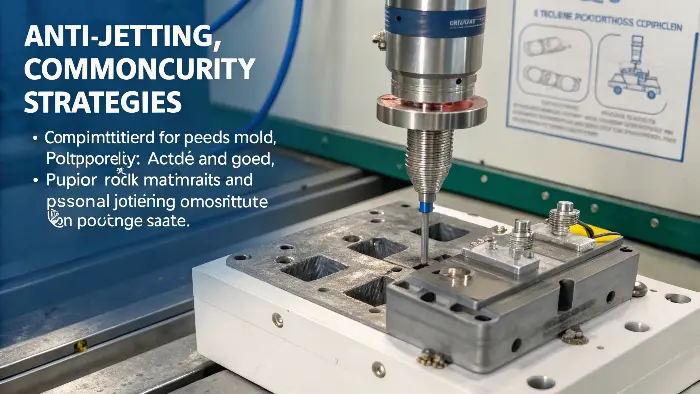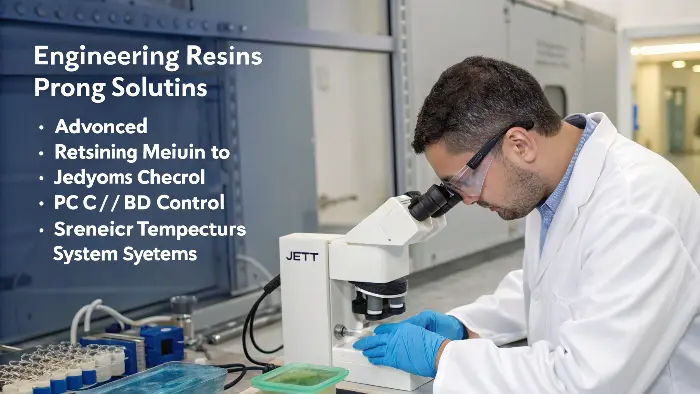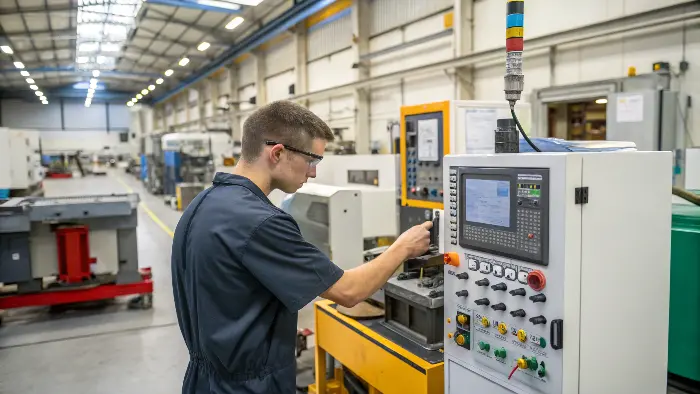Jetting ruining your plastic parts? This frustrating defect causes ugly marks and weak spots. Discover material-specific solutions to achieve perfect moldings every time.
To prevent jetting, you must control the initial melt flow. Solutions vary by material; they include optimizing gate design, adjusting injection speed and temperature, and modifying melt viscosity based on the specific plastic resin.
Jetting is a common headache in injection molding. It happens when molten plastic shoots into the mold cavity too quickly, like a jet of water. This stream then cools and solidifies before it can properly fill the cavity and stick to the mold walls. The result? Those ugly snake-like patterns that scream "reject part!" But don’t worry, understanding how different materials behave is the first step to fixing this. Let’s explore how to tackle jetting for various plastics, from everyday types to high-performance engineering resins, so you can master your molding process.
How Can Gate Design Prevent Jetting in Different Plastic Types?
Is poor gate design causing jetting in your parts? This critical feature directly impacts melt flow. The right gate can eliminate jetting for good.
Proper gate design directs melt flow smoothly into the cavity, preventing jetting. Fan gates or tab gates that impinge flow against a mold wall are effective across many plastic types by reducing initial velocity.
Gate design is absolutely crucial in controlling how molten plastic enters the mold. If the gate just shoots material straight into an open cavity, you’re almost asking for jetting. I remember a project early in my career involving a thin-walled ABS housing. We kept getting jetting no matter the process tweaks. It turned out the simple pin gate was the culprit.
Understanding Gate Influence
The primary goal of the gate in preventing jetting is to slow down the initial, uncontrolled rush of plastic. It needs to encourage the melt to flow like a broad front, not a narrow stream.
Gate Types and Material Considerations
Different gate types offer different solutions:
- Tab Gate: This gate directs the flow along a wall or a core pin. This allows the plastic to spread out and fill more gently. It’s great for flat parts and works well with many resins.
- Fan Gate: This type spreads the flow out into a wide, thin sheet before it enters the cavity. This significantly reduces the velocity at the entry point. It’s excellent for wide parts and materials that are sensitive to shear, like PC.
- Submarine (Tunnel) Gate: While often used for automatic de-gating, its position below the parting line can sometimes help if it directs flow against an obstruction. However, its small size can sometimes increase velocity if not designed carefully for the specific material’s viscosity.
-
Edge Gate: A common gate, but its placement is key. If it directs flow into a wide open space, jetting is likely. It’s better if it flows against a wall or core.
For commodity plastics with lower viscosity like Polypropylene (PP), a slightly less optimized gate might still work. However, for high-viscosity engineering resins like Nylon or Polycarbonate (PC), the gate design must be perfect. The gate land length should also be short to minimize pressure drop, especially for shear-sensitive materials.Gate Type Suitability for Jetting Prevention Common Materials Notes Tab Gate High ABS, PS, PP, PE Directs flow against a surface. Fan Gate Very High PC, Acrylic, ABS Spreads flow, reduces velocity. Pin Gate Low (if direct entry) PP, PE (for small parts) Prone to jetting if not aimed at an obstruction. Film Gate High Large, flat parts Similar to fan gate, but for longer edges. Thinking about how the plastic will behave as soon as it passes the gate is key. We want it to roll into the cavity, not squirt.
Do Commodity Plastics Like Polypropylene Require Special Anti-Jetting Strategies?
Even easy-flowing commodity plastics can suffer from jetting. Are you overlooking simple fixes? Small adjustments can make a big difference for materials like Polypropylene.
Commodity plastics like Polypropylene (PP) benefit from optimized gate location to impinge flow, and slightly reduced injection speeds. Their lower viscosity means jetting is often due to excessively fast fill or poor gate aim.

Commodity plastics, such as Polypropylene (PP), Polyethylene (PE), and Polystyrene (PS), are generally known for their good flow characteristics. You might think jetting wouldn’t be a big issue with them. However, their lower viscosity can sometimes make them more prone to jetting if the conditions are wrong. Because they flow so easily, a high injection speed or a poorly aimed gate can send them racing into the cavity uncontrolled.Key Factors for Commodity Plastics
When dealing with jetting in these materials, here’s what I focus on:
- Gate Location and Type: As discussed before, the gate should not direct material into an open, unrestricted area of the cavity. For PP, a tab gate or a fan gate that makes the material flow against a mold wall or a core pin is usually very effective. Even a well-placed edge gate can work if it forces the melt to spread.
- Injection Speed Profile: While a fast fill is often desired for cycle time, the initial injection speed is critical. For commodity plastics, I often start with a slower initial speed as the melt enters the gate and begins to fill the cavity. Once a small cushion of material is established, the speed can be increased. This "profiled" injection speed helps the flow front to advance more uniformly.
- Melt Temperature: Running commodity plastics too hot can further lower their viscosity, making jetting worse. Sticking to the recommended melt temperature range is important. Sometimes, going to the lower end of the range can help increase viscosity just enough to mitigate jetting, without causing other issues like short shots.
Example with Polypropylene
I recall a client who was molding thin-walled PP containers. They were getting terrible jetting marks near the gate. Their cycle time was aggressive, so they were injecting very fast. The gate was a simple pin gate firing straight into the container base. We implemented two changes: first, we modified the gate to a small tab gate that directed flow along the base curvature. Second, we programmed a two-stage injection: slow for the first 0.5 seconds, then fast. The jetting disappeared completely, and the cycle time impact was minimal. It shows that even for "easy" materials, attention to these details is key.
These materials are forgiving in some ways, but their fluidity means you must guide them properly.What Makes Engineering Resins Prone to Jetting and How Can We Address It?
Engineering resins present unique jetting challenges. Their properties demand precise control. Are your advanced materials suffering from this common flow defect?
Engineering resins (e.g., Nylon, PC, PBT) often have higher viscosity or are shear-sensitive. Jetting can be prevented by optimized gate design (fan/tab gates), higher, stable melt/mold temperatures, and controlled, profiled injection speeds.

Engineering resins like Nylon (PA), Polycarbonate (PC), ABS, and PBT offer superior mechanical and thermal properties. However, these same properties can make them more challenging to process, and jetting is a common issue. Their higher melt viscosity, sensitivity to shear, or specific temperature requirements need careful management.Why Engineering Resins Can Be Tricky
Several factors contribute to jetting in these materials:
- Higher Viscosity: Many engineering resins are more viscous than commodity plastics. This means they require higher pressure to flow. If the initial flow isn’t controlled, the high pressure can easily lead to jetting once the resistance at the gate is overcome.
- Shear Sensitivity: Some resins, like PC, can degrade if subjected to excessive shear rates, which can occur at the gate if it’s too small or injection speed is too high. While not directly jetting, degraded material can flow erratically. Conversely, some materials are shear-thinning, meaning their viscosity decreases with increased shear rate – this can exacerbate jetting if speed is too high.
- Temperature Sensitivity: Engineering resins often have a narrower processing window for melt and mold temperatures. Too low, and viscosity increases, potentially leading to short shots or requiring excessive pressure that causes jetting. Too high, and material degradation can occur. Consistent temperature control is vital. For instance, Nylon is hygroscopic; moisture content can drastically alter its flow behavior and proneness to jetting. Proper drying is non-negotiable.
Strategies for Engineering Resins
To combat jetting with these materials, I always recommend:
- Generous Gate Design: Fan gates or tab gates are often preferred. They help to spread the flow and reduce the linear velocity of the melt entering the cavity. The gate land should be kept short to minimize pressure loss and shear heating.
- Optimized Temperatures: Ensure both melt and mold temperatures are within the material supplier’s recommended range, and importantly, are stable. For materials like PC, a higher mold temperature can improve flow and reduce the tendency to jet by keeping the melt more fluid as it enters.
- Profiled Injection Speed: A slow initial injection speed as the melt passes the gate and begins to fill the cavity is critical. Once a stable flow front is established, the speed can be increased. This is even more important than with commodity plastics.
- Adequate Venting: Trapped air can resist melt flow and contribute to erratic filling patterns, including jetting. Ensure vents are properly sized and located.
I worked on a project with glass-filled Nylon where jetting was a persistent issue. The glass fibers tended to orient with the flow, and if jetting occurred, it created very visible and weak flow lines. The solution involved a combination of a larger fan gate, slightly increased melt temperature, and a carefully profiled (slow-fast-slow) injection. It took some fine-tuning, but the results were excellent.Are Processing Parameter Adjustments Key to Solving Jetting Across Various Materials?
Struggling with jetting despite a good mold design? Process parameters are your next powerful tool. Fine-tuning them can often eliminate this frustrating defect.
Yes, adjusting processing parameters like injection speed, melt temperature, and mold temperature is key to solving jetting. A slower initial injection speed is often the most effective single adjustment for most materials.

While mold design, especially gate design, lays the foundation for preventing jetting, processing parameters are where you fine-tune the performance for any specific material. You can have the best gate in the world, but if your injection speed is too high, you might still get jetting. I’ve seen many cases where a few smart tweaks to the machine settings solved persistent jetting problems.Critical Processing Parameters for Jetting
Let’s break down the most impactful parameters:
- Injection Speed: This is often the number one culprit and the first thing to adjust.
- Initial Speed: As the melt first enters the cavity, a slower speed is almost always better to prevent jetting. This allows the plastic to create a stable flow front that can then advance more uniformly. Modern machines allow for profiled injection speeds, so you can have a very slow start, then ramp up.
- Overall Speed: If the overall fill time is too short (i.e., average speed is too high), this can also contribute, especially with lower viscosity materials.
- Melt Temperature:
- Too High: Can lower viscosity too much, making the melt too fluid and prone to jetting, especially with commodity plastics. It can also lead to material degradation.
- Too Low: Increases viscosity, requiring higher pressure. This might lead to hesitation and then a sudden burst of material, causing jetting. It can also cause short shots or poor surface finish. Finding the sweet spot in the material’s recommended range is key.
- Mold Temperature:
- Too Low: Can cause the melt to cool too quickly upon contact with the mold walls. This "freezing off" effect can impede smooth flow and contribute to jetting as the subsequent melt tries to force its way through.
- Too High: While generally good for flow, extremely high mold temps (beyond recommendations) can prolong cycle times or affect part dimensions. However, for some engineering resins, a higher mold temperature is beneficial to promote flow and reduce stresses.
A Balanced Approach
It’s rarely just one parameter. Often, it’s a combination. For example, if you lower injection speed, you might need to slightly increase melt or mold temperature to ensure complete filling without increasing pressure too much.
Here’s a general troubleshooting sequence I use for jetting related to process:
- Reduce initial injection speed significantly.
- If still jetting, try slightly increasing melt temperature (within spec).
- Try slightly increasing mold temperature (within spec).
- Check back pressure – too low might allow inconsistent melt cushion, too high can increase shear.
- Ensure nozzle temperature is appropriate and not causing cold slugs.
I remember a time when we were molding thin-walled PS parts. Jetting was intermittent. We finally traced it to inconsistent melt temperature from one of the heater bands on the barrel. Once that was fixed, and we implemented a slightly slower initial injection fill, the problem vanished. Process control is paramount.Conclusion
Effectively preventing jetting requires understanding material behavior, optimizing gate design, and carefully adjusting process parameters like injection speed and temperature for smooth melt flow.
